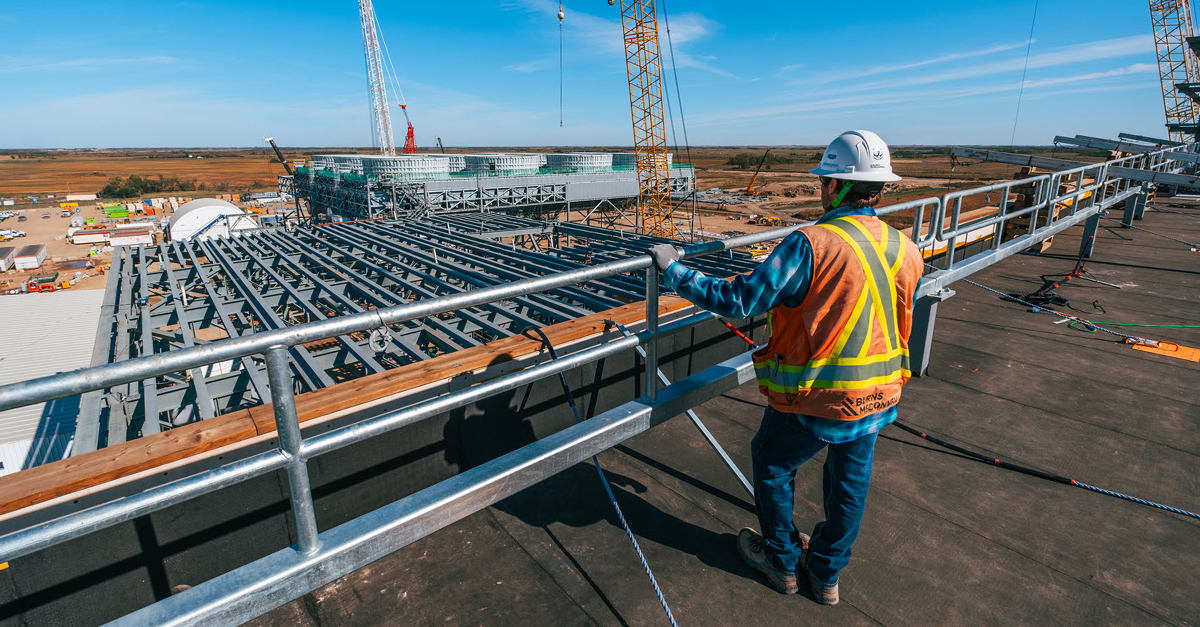Land Use for Wind and Solar Facilities
July 15, 2024

Quotables:
- We’re planning to add up to 3,000 megawatts (MW) of wind and solar to our power system by 2035. We’re working primarily with IPPs to develop the facilities.
- The relationship between Independent Power Producer (IPP) and landowner is very important. For any project to happen, the IPP needs to first secure land.
- The IPP is responsible for decommissioning the facility and cleaning up the site when it’s time. They must follow all local, provincial and federal laws and any agreements they may have with landowners.
We’re planning to add up to 3,000 megawatts (MW) of wind and solar to our power system by 2035. We’re working primarily with IPPs to develop the facilities.
Finding Land
The relationship between IPP and landowner is very important. For any project to happen, the IPP needs to first secure land.
As we shared in our first blog, IPPs are companies separate from us. They’re selected to develop, construct, own, operate and maintain wind or solar power facilities. We typically select IPPs for specific projects through a competitive procurement process.
In some cases, a developer will approach us first with a proposal. Either way, the developer needs to have some land options for where the facility will be built.
How Much Land is Needed?
The amount of land needed depends on the kind of power that will be generated and the size of the project. A typical size for a utility-scale wind facility is 200 MW, like Golden South Wind Facility near Assiniboia and Bekevar Wind Facility near Moose Mountain Provincial Park.
On average, a 200 MW wind facility consists of about 35 to 50 wind turbines, depending on turbine size. They’re usually spaced about one per quarter section of land. In total, one facility may span thousands of acres, but the turbines have an actual footprint of 100 to 200 acres once they’re built. Most of the land around them can still be farmed.
Utility-scale solar facilities use a smaller, more concentrated amount of land. Depending on the design, a large 100 MW solar facility (the size of Iyuhana Solar project under construction near Estevan) typically requires about 480 to 940 acres of land. That’s equal to 3 to 6 quarter sections. Land around the solar site can continue to be farmed.
How Do Areas Get Selected for Wind and Solar Projects?
Many factors are considered when determining where to develop, such as:
- Available land that has good sun and/or wind exposure
- How close it is to existing transmission lines, switching stations or substations
- How the project will impact the land, local wildlife and other environmental conditions
- Feedback from Rightsholders, municipalities, landowners and other stakeholders
Who’s Responsible to Clean Up a Wind or Solar Facility Site?
The IPP is responsible for decommissioning the facility and cleaning up the site when it’s time. They must follow all local, provincial and federal laws and any agreements they may have with landowners.
Do IPPs Pay Taxes?
Yes. IPPs aren’t exempt from municipal property taxes unless a municipality chooses to make them exempt.
Can I Mortgage My Land If an IPP is on It?
Yes. Typically, IPP agreements allow landowners to sell or transfer the title of their land. It’s important to discuss this with the IPP before signing any land lease agreements. It’s also a good idea to consult your lawyer before signing any leases or options to lease to ensure your landowner rights are protected.
If an IPP Has an Easement on my Land, can it Restrict my Activities on that Land?
Normal farming operations are typically not impacted. Some wind companies may request easements to make sure the land is kept as is at the time of signing an agreement with the landowner.
Achieving Net Zero
We’re committed to achieving a net-zero greenhouse gas (GHG) emissions power system by 2050 or earlier, and we’re on track to do so.
Currently, 34% or 1,854 MW of Saskatchewan’s generating capacity comes from renewable sources. Renewables like wind and solar power will help us meet GHG emissions standards and provide a cost-effective generation option.
For more information about IPPs and how we work with them, visit saskpower.com/IPP.
Learn More:




